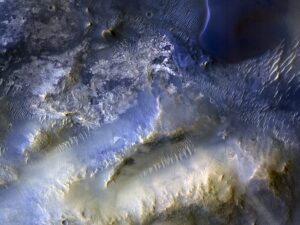
South Georgia, a remote British Overseas Territory, offers a unique opportunity for wildlife enthusiasts to get closer to nature than almost anywhere else on the planet. Visitors can admire the sheen on penguins’ feathers, be alarmed by the fierce beaks of giant petrels, and gaze into the watery black eyes of seals. Unlike the Arctic and Svalbard, where sightings of walruses or polar bears are rare and distant, South Georgia provides an intimate wildlife experience. However, reaching this remote island is no small feat. Located 1,300 kilometers from the Falkland Islands and 2,000 kilometers east of the South American mainland, South Georgia is accessible only by expedition cruise during the summer months.
Currently, I am exploring this rugged destination with Aurora Expeditions, a leading company in polar adventures. The expedition ship, Greg Mortimer, boasts an inverted bow for stability in rough waters and offers abundant decks for viewing icebergs and seabirds. For those who prefer warmth, the ship features two well-placed hot tubs. The volatile weather in this region necessitates an experienced team, and I am fortunate to have Aurora’s founder, Greg Mortimer, on board. Mortimer, the first Australian to climb Mount Everest alongside Tim Macartney-Snape, has led over 80 expeditions to Antarctica.
Exploring South Georgia’s Wildlife
Each excursion in South Georgia offers something unique. Hercules Bay, for instance, is home to macaroni penguins with their distinctive yellow head feathers and elephant seals as large as boulders. Fortuna Bay, with its glaciers and fur seals, presents a dramatic landscape. As we sail into Stromness Bay, the sun illuminates the alpine peaks, creating a breathtaking scene. However, the weather can change rapidly, transforming the landscape from beautiful to desolate. Despite this, going ashore remains a rewarding experience.
The highlight of expedition cruising is the opportunity to learn from experts. Twice-daily talks by the expedition team provide fascinating insights into South Georgia’s natural history. At St Andrew’s Bay, we encounter the largest king penguin rookery on the island, with potentially over half a million animals. The island hosts most of the world’s Antarctic fur seals and half of its elephant seals, along with approximately 60 million seabirds.
The Challenges and Rewards of Polar Cruising
Returning to the ship after a day of exploration feels surreal. The mudroom, where we remove our boots and polar jackets, serves as a portal between the wilderness and the ship’s comfort. A sauna session warms chilled bones, followed by a delightful dinner of pappardelle alla norma and Argentine malbec. On our final morning, we venture out in Zodiacs at Right Whale Bay, where peaks rise dramatically in the background and waterfalls cascade into the sea. The beaches are so crowded with fur seals that finding a landing spot is challenging. Bull seals, agitated by the mating season, grunt and huff, while penguins dart through the water like synchronized swimmers.
By late morning, the wind reaches 70 knots, forcing us to cancel our final excursion. South Georgia’s weather is notoriously unpredictable. “You’ll have some blue-sky days and bad days and some filthy days, but get up and out anyway, because you’ll always see things that are unique,” Mortimer advised at the journey’s start.
Conclusion: A Lasting Impression
As snow begins to fall, I stand by the railing, peering through frozen eyelashes at my last glimpse of South Georgia. The island fades into the fog like a magical kingdom, leaving only albatrosses wandering in a milky sky. This expedition has been a journey of wildlife overstimulation and natural wonder.
Aurora Expeditions offers several itineraries to South Georgia, including a 23-day Antarctica Complete journey starting at $US29,756 per person, which includes all shore excursions and Zodiac expeditions. For more information, visit aurora-expeditions.com.






